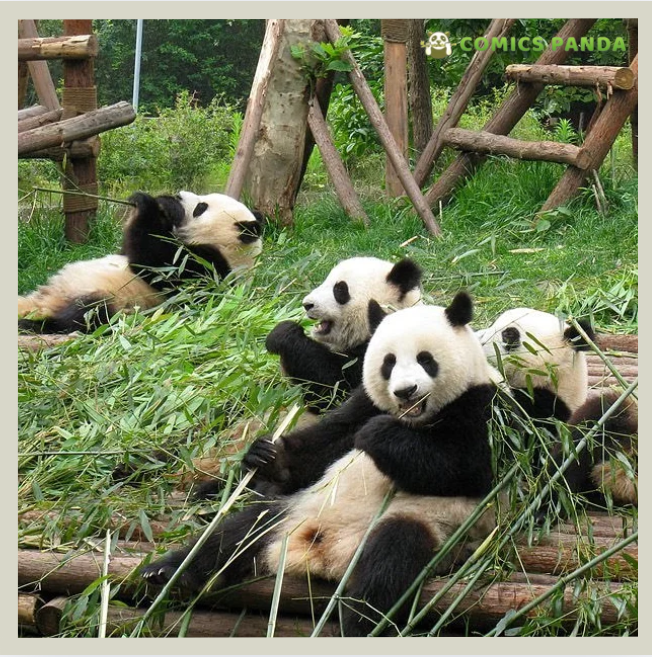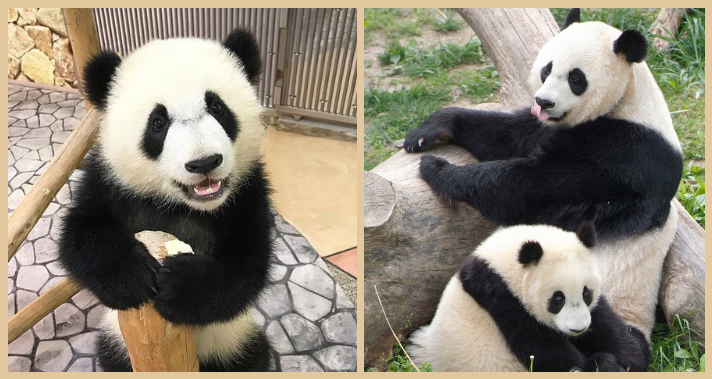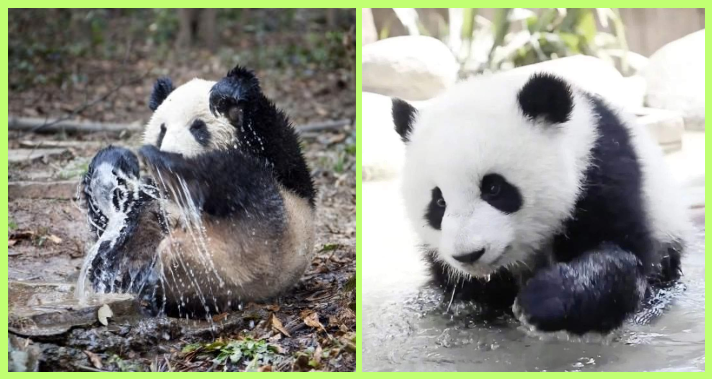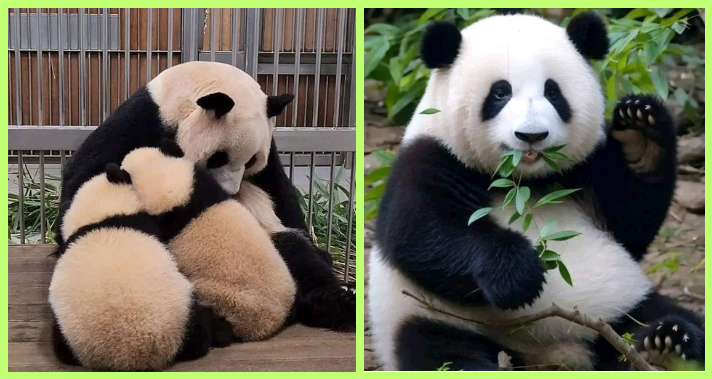High in the China’s misty mountains, winters are long, cold and often snow-covered deep. In these silent forests, one of the most peaceful animals on Earth, the giant panda continues to survive in spite of freezing temperatures, icy winds and limited food. Panda do not migrate to some warmer areas, don’t hibernate like some animals. Instead they remain in their natural home all year round and brave off the winter in a spirit of quiet strength. Their survival is due to ingenious instincts, powerful bodies and the design of nature. This blog describes how panda manages to live through the harsh winters in mountain forests of China.
How Pandas Survive Harsh Winters
Wild pandas live primarily in the dense forests of bamboos of the Sichuan, Shaanxi, and Gansu mountains. These forests are often cold, damp and covered with fog especially in the winter months. It is freezing cold, and the ground is covered by snow. Living in such an environment isn’t easy, but pandas have managed to adapt to their living environment over thousands of years. Their body and habits are such that they are adapted to survive the cold without the need to escape or hibernate. One of the most important tools that pandas have in order to survive the winter is their thick fur. Their coat consists of two layers; an inner layer is soft to trap warmth and the outer layer is rough to protect against wind, snow and rain. This double layered coat of fur serves as a natural winter coat. The black patches of their fur around their shoulders and legs in particular will probably also allow them to absorb heat energy from the sun when available.
Panda have large round body which helps them to conserve heat. The more round an animal is, the less body heat an animal loses. This is because there is less surface area to be exposed to the cold when there is a rounded shape. Pandas store fat under their skin, particularly before the winter begins. This fat is usable as a source of energy and will work as an insulator during colder months. Their heavy bones and strong muscles help them to walk in the snow and climb up a tree or rock when necessary. Even in freezing temperatures, their body structure helps them to remain warm and stable. Panda do not stay in one part of the mountain throughout the year. When winter comes they relocate from higher parts and colder temperatures of mountains to lower parts of the mountains.
#1. Life is better with friends

#2. Trust the process and nap often

These lower zones are a little warmer and are not so covered in snow where food can be found. This long slow movement is termed as seasonal migration. Unlike long migrations observed in other animals, pandas move small distances only enough to move to a more comfortable environment. Their memory helps them to remember old trails and shelters and zones with bamboos. Food necessary to survive the winter, for pandas, bamboos are found all year round. Even covered by snow the bamboo is green and strong. Panda do not eat meat to survive the winter. Instead they remain to eat bamboo leaves, stems and shoots. Bamboo does not contain a lot of energy, so the pandas have to eat for many hours in a day, even in the cold.
#3. A hug in the shape of a pand

#4. Soft paws and sleepy eyes

During winter, tender shoots are harder to find, so tender bamboo stems and leaves that are still available are eaten by pandas. The strong jaws and large teeth of this mammal help them to break and chew on the tough bamboos. While other animals might may have trouble finding food, the pandas have this steady source, which grows widely in their habitat. Since bamboo provides low energy, pandas have to save the energy they have. That is why they are slow moving and rest frequently. In fact in winter, this habit is even more important. Instead of running or Other engaging long, pandas spend most of their time eating vegetarian and sleeping in order to maintain their strength. This slow and relaxed behavior helps them to protect themselves from exhaustion and keep their bodies warm by conserving energy.
#5. Eating greens and living dreams

#6. Fur full of softness and heart full of quiet

Panda do not make dens like some animals but they are good on shelter. When the wind is cold or snow is heavy, pandas will rest in rocky caves, dense bamboo bushes, tree roots or hollow tree trunks. These natural shelters are the place to protect them from the direct wind and snow. They choose places which are quiet and dry a bit warmer than open land. Even when they sleep in the snow, they are kept from losing too much warmth by their thick fur. No matter what the temperature panda feeds in the case of cold countries panda still requires water. They obtain water by drinking from the unfrozen mountain streams, or licking the melted snow. Many mountain forests have flowing streams from the melted ice which do not all freeze.
#7. Sleep, eat, repeat and the panda way

#8. Living life one bamboo bite at a time

Winter slows down the movement in forests and many animals are either resting, hiding, or going out in search of food. Pandas don’t fight their way out of danger, but instead predict the danger. Their strong sense of smell helps them to detect the presence of other animals. Even in cold air, they are able to smell scent marks left on trees or rocks. If there is danger close they stealthily move away. Their black and white coat also helps them to blend into the snowy forests and make it harder for predators to notice them. Many people think panda bears would hibernate like the other bears. But unfortunately, during the winter time panda never hibernates. This is because their dietary habits of eating bamboo is not sufficient to store up enough fat for them to sleep through cold months without eating.
#9. Just a panda enjoying the peaceful life

#10. Too fluffy to handle and too calm to care

Panda does not fight the winter, but they live with it. They adapt their behavior, move if need be, eat what there is to eat, and don’t lose their cool. Their survival is not based on speed and strength but on a sense of oneness with nature. Their thick fur, slow lifestyle, excellent sense of smell, ability to find food and quiet movements together make for a perfect cold season survival system. Pandas avoid freezing to death in the hideous Whether not by fighting but by vastly Knowing what to do. They remain calm, save energy, eat bamboo, go to safe places, and believe in their nature. Their passive survival way of life makes us rethink that there are also other sources of strength that are quiet and soft. In the silent snow covered forests of China, they panda is a symbol of patience, resilience and the beauty of nature. In case you enjoyed this blog and enjoy natural stories and wildlife articles that we write about, pass on this blog to another person and visit our website.




